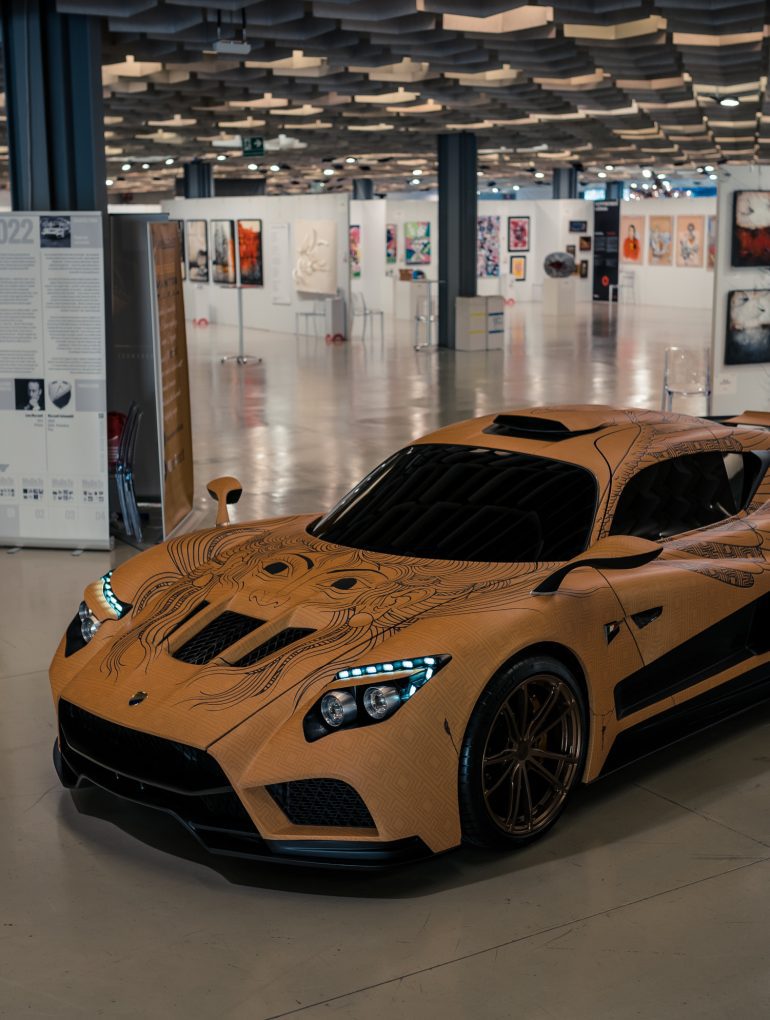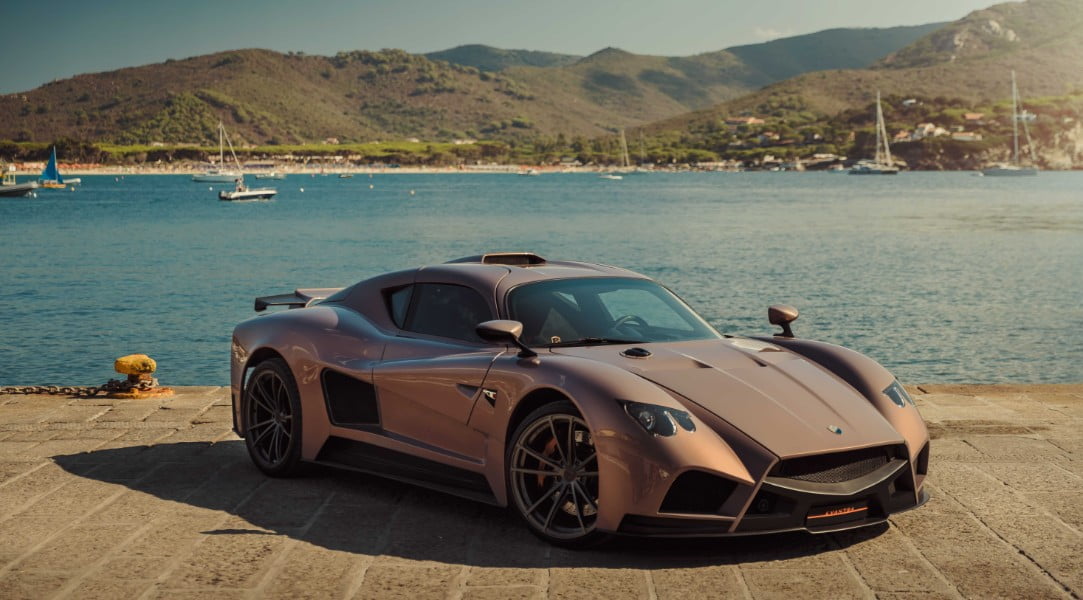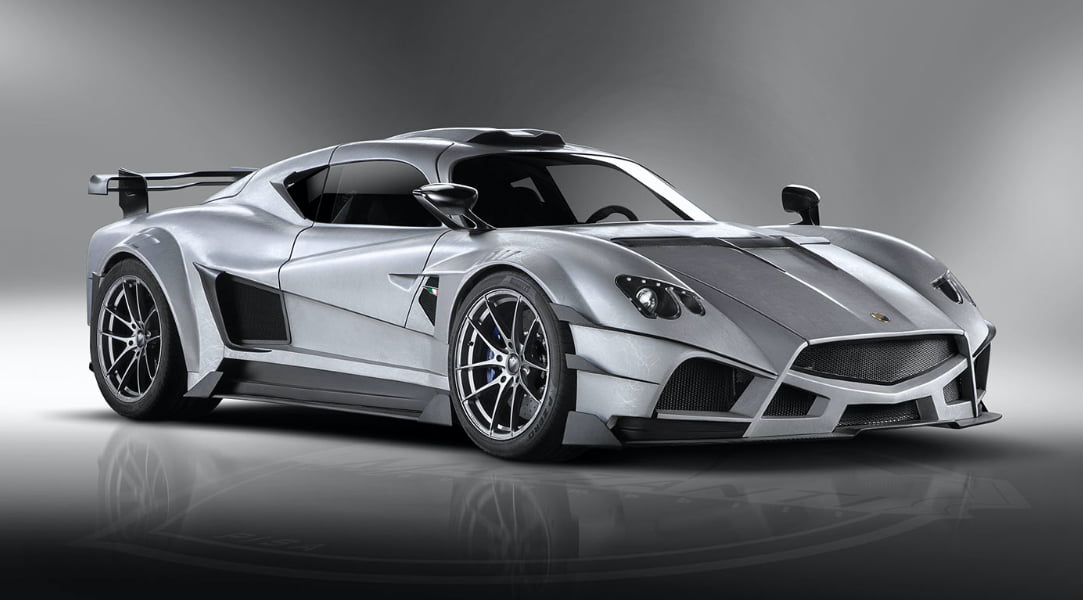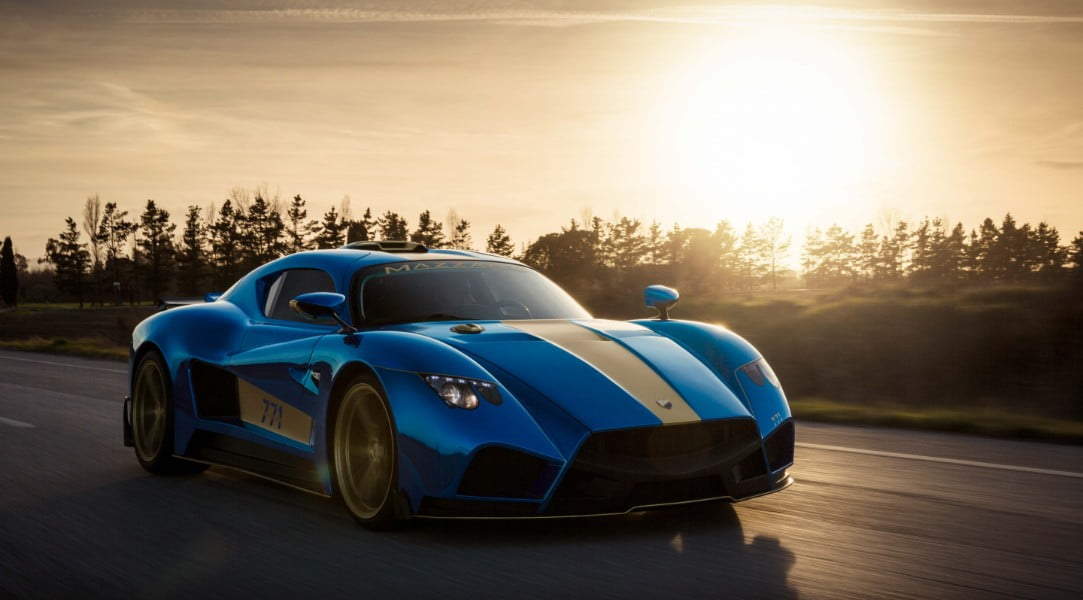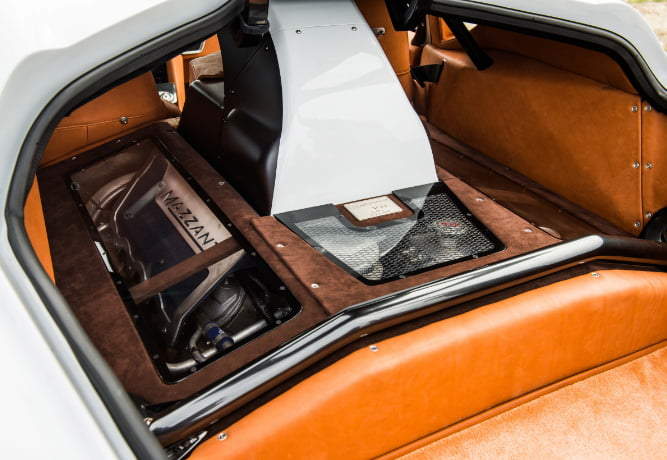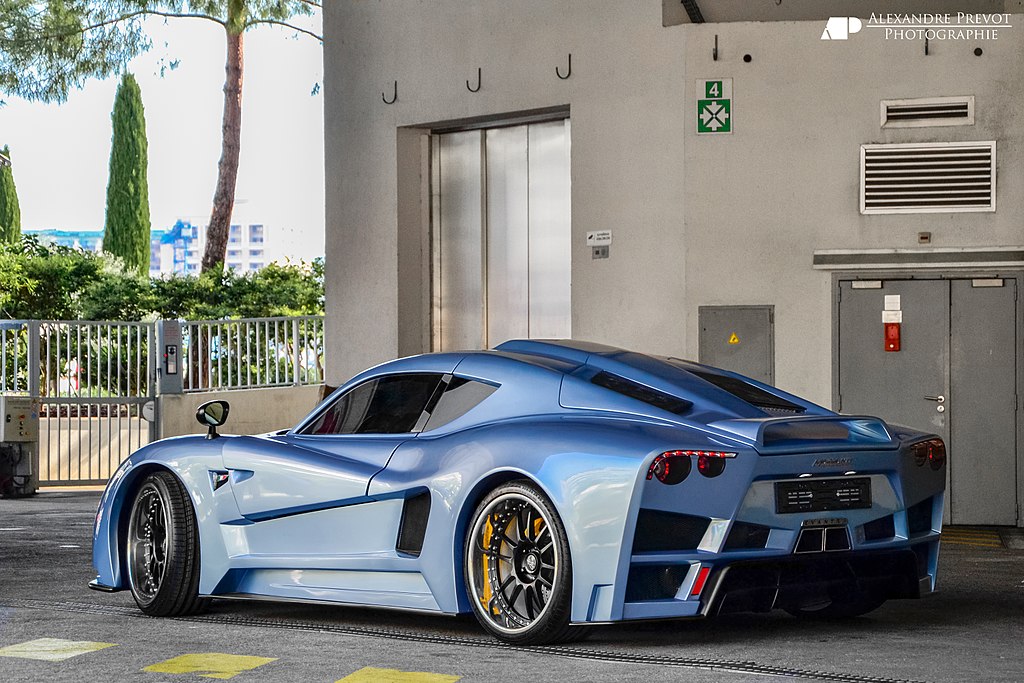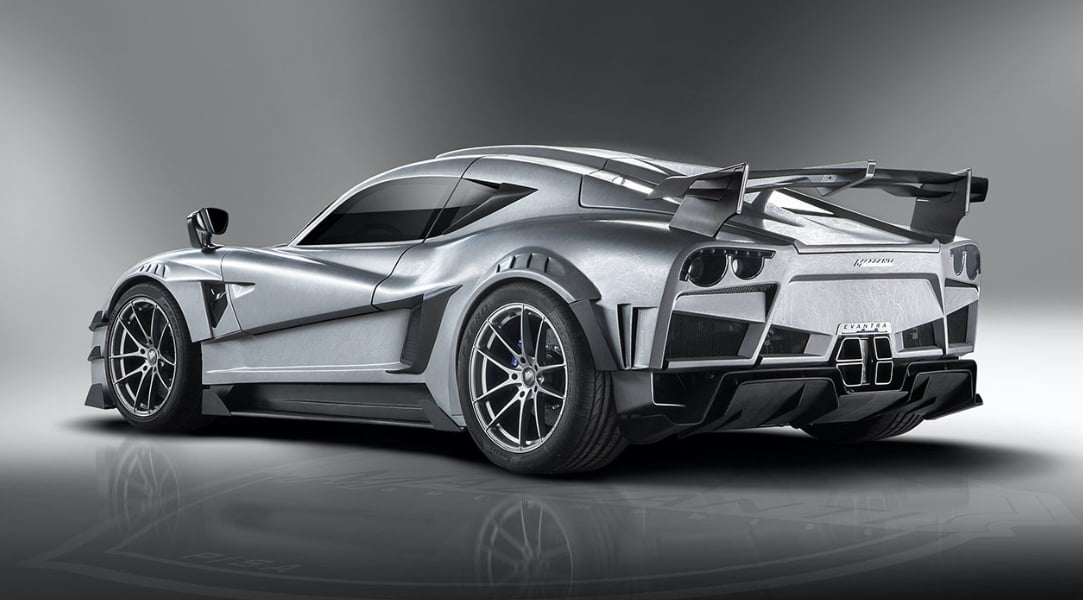All photos courtesy of Mazzanti Automobili
In the world of supercars and hypercars, it has become a bit of a gimmick that manufacturers will release a car, and then, a year or two down the road, release a special, limited, or track-only version of that car. This has happened with many manufacturers from all countries, around the world. There are a few manufacturers, however, that stay dedicated to a tight model line, and each car from that model line is the absolute best it can be at the time it was built.
Mazzanti Automobili, a specialist hypercar coachbuilder and producer in Italy, is one such company. In fact, their model line is exactly three cars: The Evantra Classic, the Evantra 781, and the Evantra Millecavalli R. That is, it was three cars until October 2021, when their latest hypercar, the Evantra Pura, was unveiled to the world. Designed and manufactured without compromise, this car is set to become the next great Italian limited edition collector’s hypercar, as you will soon see.
The History Of The Evantra
The Evantra model has always been at the core of Mazzanti Automobili’s design and engineering concepts, due to the fact that the initial boxed steel frame and chrome-molybdenum cage of the 2012 prototype proved to be extremely strong. Structural rigidity was key, due to the fact that the Evantra was always meant to be a comfortable but agile and sporty two seater coupe. After testing and proving, the base model, now known as the Evantra Classic, went on sale in 2013.
As part of the whole concept of a coachbuilt hypercar, each and every vehicle was built precisely to customer specifications. The bodywork could be made out of carbon fiber, hand-wrought aluminum, or pretty much any combination of both. Each interior was made to measure, with the driver’s seat made to fit the customer’s own unique body shape, in essence making each interior a one-off, one of the core values of being coachbuilt.
Evantra (Evantra Classic)
The original engine for the 2013 Evantra was a GM-supplied 7.0L V8 that was stripped down to the block and rebuilt by Mazzanti’s in-house engineering department. What resulted was a 701 HP V8 that sat directly behind the cabin in a mid-mount longitudinal position, passing power through a 6-speed sequential transmission. During prototyping and testing, however, those same Mazzanti engineers were able to extract a further 50 HP from the engine, meaning the 2013 production cars left the factory with 751 horses going to the rear wheels.
With a limited production run of five cars per year, this allowed each engine to undergo stress testing and fine tuning, making each engine, like the car, a one-off in terms of its tune and timings. As such, if you were to test an Evantra Classic on a dynamometer, you would get a number close to 751 HP, but each and every car would give you a different result.
Evantra Millecavalli
With the success of the original Evantra, Mazzanti introduced the Millecavalli, a more hardcore version of the base car, in 2016. The 7.0L GM V8 was not only stripped down to the block again, this time it was bored out to 7.2L, had new pistons to match the boring made, and just for power’s sake, had two turbochargers bolted to it. The result is the 7.2L Mazzanti Twin Turbo V8, which produces a net 1,000 HP, with 885 lb-ft, or dead on 1,200 Newton-meters, of torque.
This new engine was the basis of the Evantra Millecavalli’s name, as in Italian, Mille is “One thousand” and Cavalli is “horses,” meaning the car is literally named the Evantra One Thousand Horses. Its interior is again customized to each customer, but features a more track oriented setup, including a bespoke 6-speed sequential built only for the Millecavalli. This means that the dash provides only necessary information, and the materials are more suited to letting the driver focus on speed and handling, instead of out and out luxury.
Evantra 771
In 2016, the next Evantra was revealed, the 771. This version was displayed at the 2016 Bologna Motor Show, and gained immediate attention. It shared the same basic lines of the Evantra, yet somehow flexed a bit more, was that little bit more aggressive, and spoke of the extra 20 HP from its 7.0 Mazzanti-reworked V8, so that it produced 771 HP.
The engine of the 771, with its direct feed air shaft from the roof scoop
Special features of the Evantra 771 are that it came with special, Mazzanti-only lightweight wheels from OZ Racing, shod with 255/30R20 fronts and 325/23R20 rears Pirelli P Zero tires. MacPherson struts were installed in all four corners, giving the car exceptional responsiveness and ride comfort without diluting the hypercar experience.
Brakes were increased in diameter from the Evantra, with a 380mm rotor with 6-piston calipers in the front, and 360mm rotors with 4-piston calipers in the rear. The 771 was also the first Mazzanti to offer second generation carbon-ceramic brakes, offering fade-free performance without the grabby, jerky nature of the first generation carbon-ceramics offered by many supercar manufacturers in the mid-2000s.
Evantra 781
As the Evantra 771 became more and more desirable as a hypercar, and due to the limited production of only five cars per year, the decision was made to switch the engine from the 7.0L Mazzanti-fettled V8 to another GM-supplied V8, this one being a 6.2L V8 based on the widely known LT2 Corvette engine. Of course, this engine was stripped down to the block and extensively reworked by skilled Italian engineers, and ended up producing 781 HP.
As well, the Evantra 781 changed the suspension from MacPherson struts to fully adjustable, independent double wishbone suspension at each wheel. This was done to give the 781 a more aggressive handling profile and increasing high speed stability in response to road surface imperfections.
Evantra Millecavalli R
The most recent Evantra, the Millecavalli R takes the already insane performance and handling of the Millecavalli and turns all the dials up to maximum. The 7.2L V8 was taken back to the Mazzanti engineers, and with a further boring and reworking of the tuning, is now a 7.4L Mazzanti V8 with a nigh unbelievable 1,121 HP and 892 lb-ft of torque.
The biggest difference over its brother model is that the R receives a full aerodynamic package. This is meant to be the track-only version of the Evantra, yet because of it keeping the boxed steel and chrome-molybdenum frame and cage, it is fully road legal. Also, as part of the track-oriented nature of the car, special Michelin Sport tires are made for the car.
The New 2021 Evantra Pura

In Italian, the word Pura means “pure.” For Luca Mazzanti, the man behind the name of the company, it is something he has been searching for in his cars from day one. Not purity in the sense of design or shape, but purity in the way that the car feels around the driver. Let us remember that each and every Evantra is almost a one-off due to being customized to each client, and Luca wanted something for those that remember the days of three pedals, a manual shifter, and the connection that gave, the pure exhilaration, of being completely one with the machine.
The core of this search for the purest driving experience comes with the all-new 7-speed manual transmission designed for the Evantra Pura alone. Left behind are the sequential 6- and 7-speed transmissions of the other models, as they don’t give the same connection as a gated transmission, each shift accompanied by that mechanical feeling of the lever sliding home. The clutch has also been redesigned for the car, to give superb feel and allow the driver to slip it perfectly, with a move from a dual-plate clutch package to a triple-plate clutch.
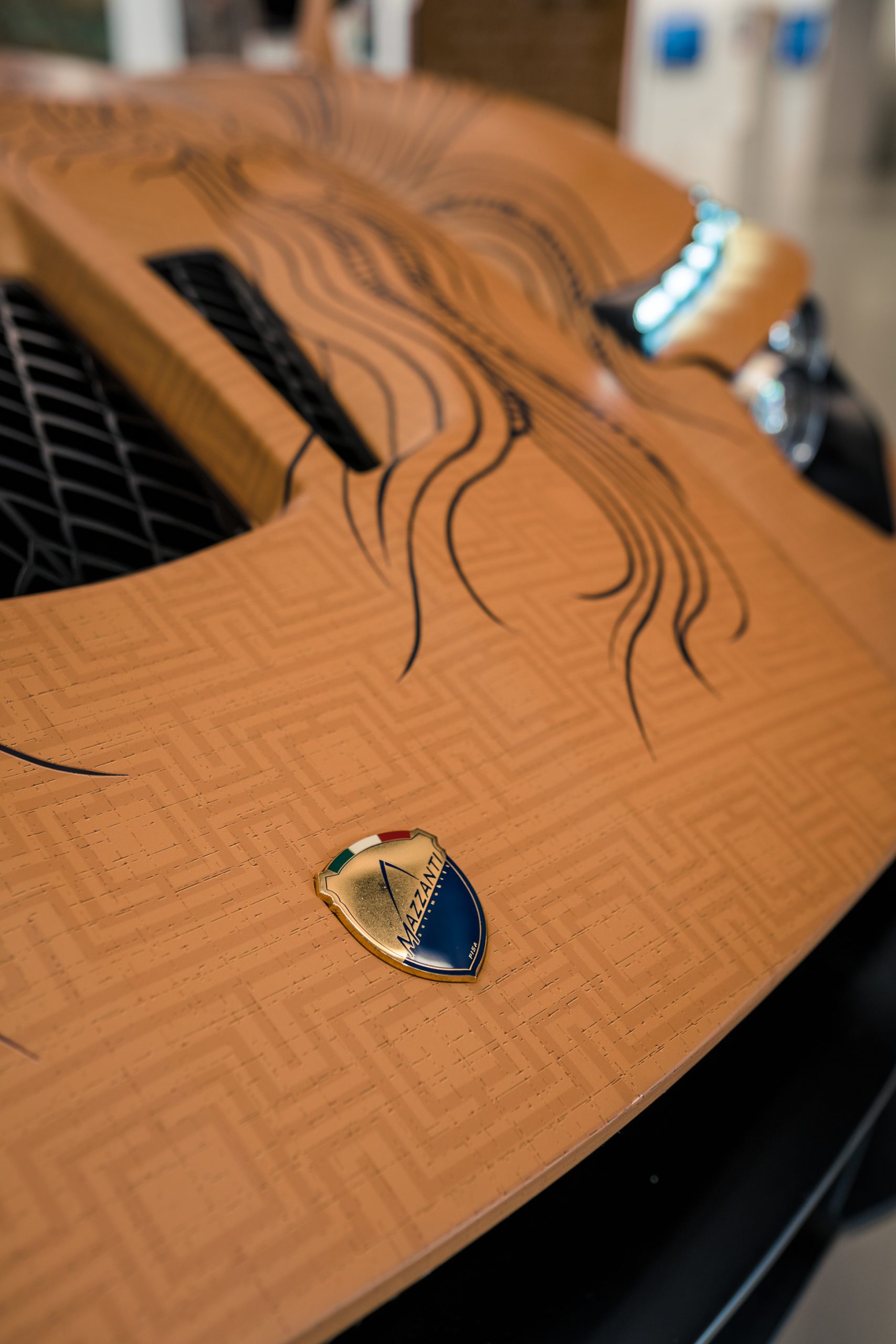
The engine is borrowed from the Evantra 781, yet as with each model, has taken a trip through Mazzanti’s in-house engineering and tuning department. What has emerged is a 6.2L V8 with a bespoke supercharger, which feeds the dual-injection-per-cylinder engine with compressed air from even the lowest revs. This, in turn, helps the V8 produce 761 HP, but more importantly, 970 Nm of torque (about 715 lbs-ft).
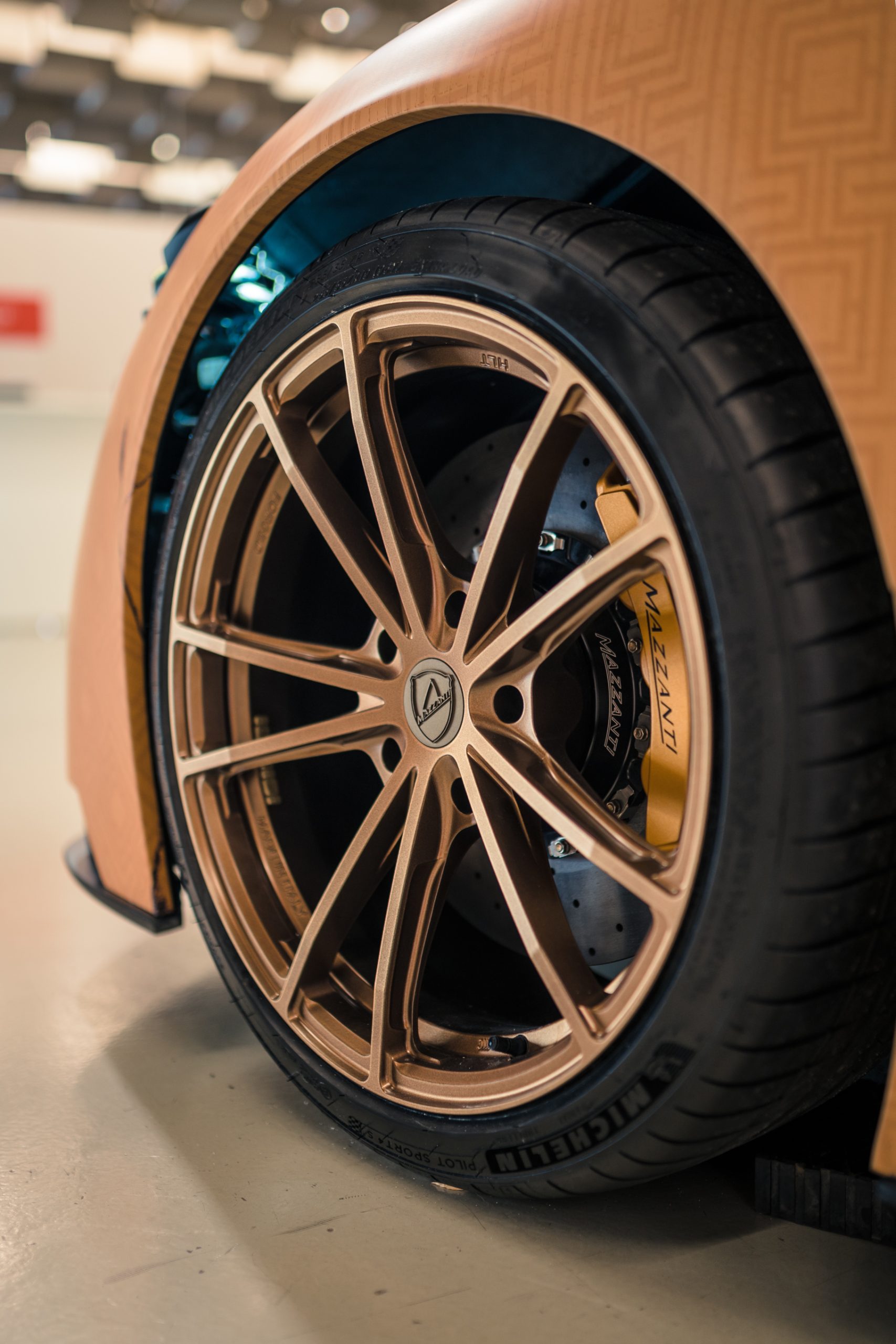
This pursuit of driving purity is not only down to the engine and clutch, however. The body has been extensively lightened, and the aerodynamics have been reworked with the use of computer-aided fluid dynamic simulation. These simulations were carried out by both Mazzanti and their strategic partners who help design Formula 1 and Le Mans racing cars, giving highly detailed results that let the aerodynamics be optimized for the power and speed of the car.
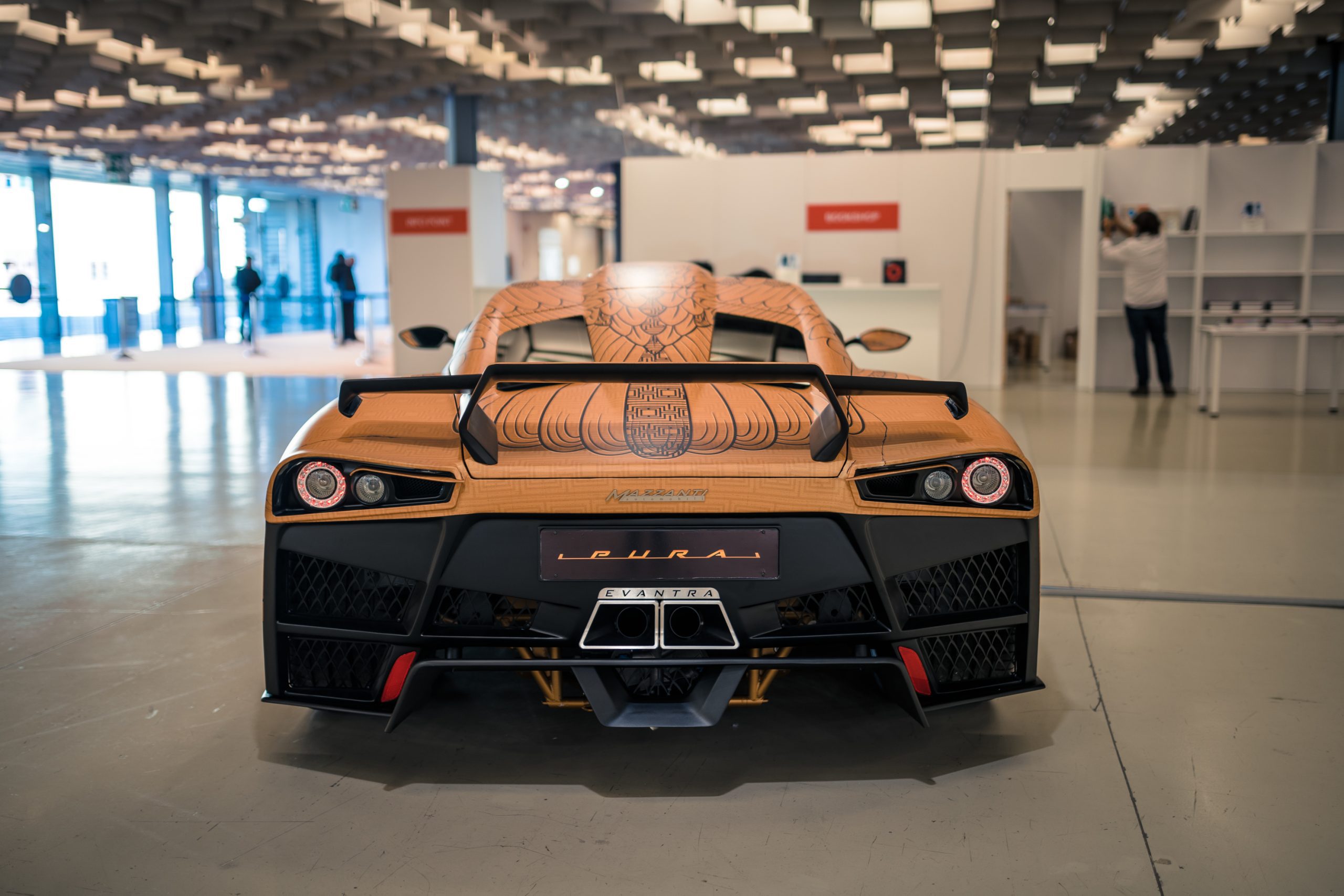
The Pura is also the first Evantra that will not include any aluminum body parts at all in its construction. In pursuit of that pure driving experience, the car will be made of a special weave of carbon fiber composite that has immense torsional and structural rigidity, yet is so lightweight that this Evantra produces another first, that being its dry weight of 1,280 kg (2,822 lbs), the first car weighing under 1,300 kg.

It is this combination of factors that has led to Luca Mazzanti bestowing the name Pura onto this model. The control of a light, single clutch with three plates. A gated 7-speed manual shifter with positive and solid feel. A lighter weight body, tuned aerodynamically to provide the possible handling and high speed experience. A V8 engine with a Mazzanti-designed supercharger giving the best sound and power, a bellow of 8 cylinders matching with the soprano scream of the twin screws in the supercharger housing.
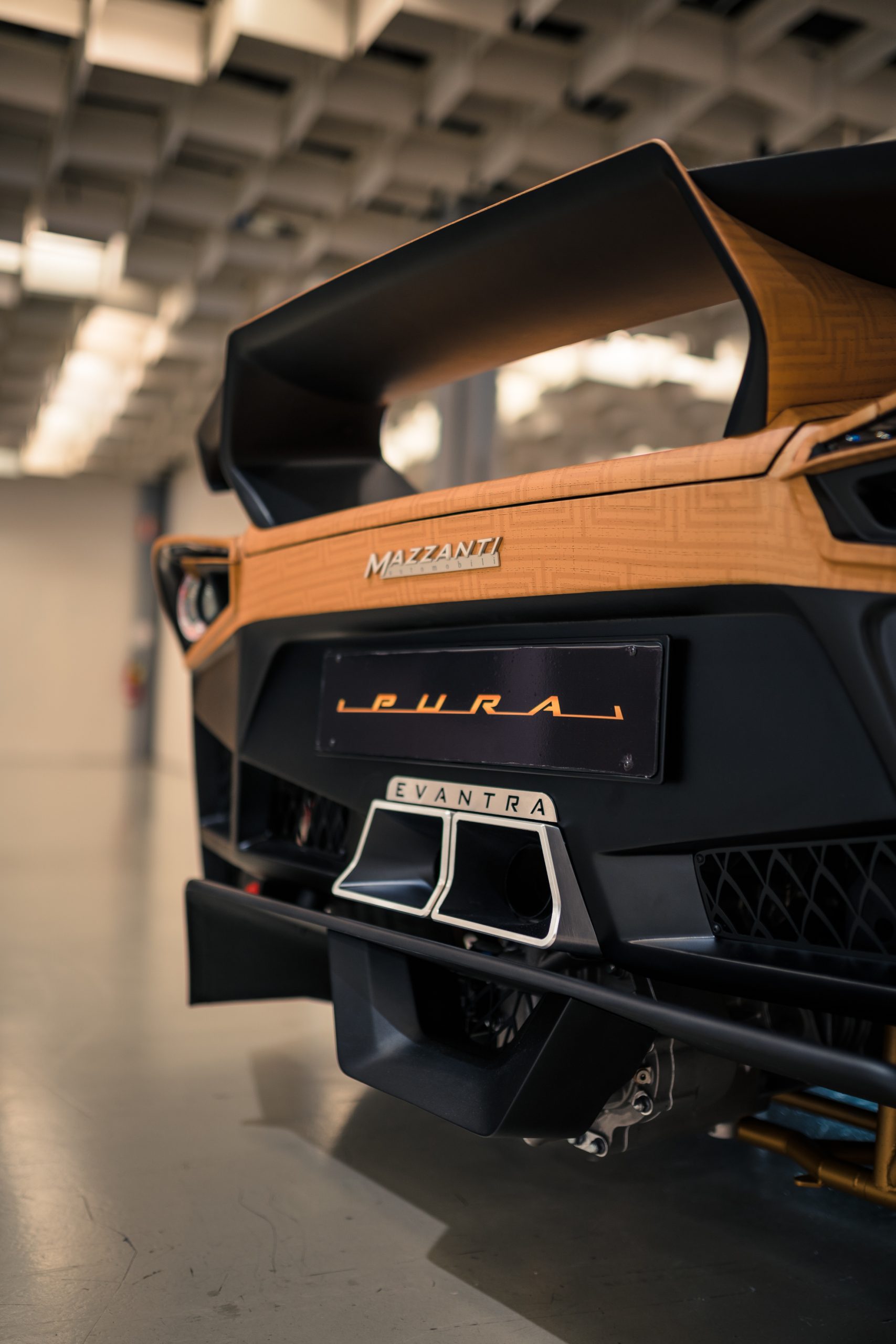
The result is the most pure Evantra made. It bolts to 100 KPH (62 MPH) in 2.9 seconds and pulls strongly to a top speed in excess of 360 KPH (224 MPH). It also carries the purest of partner parts, among them Brembo second-generation carbon-ceramic discs and calipers, Tractive Suspension shocks within adjustable MacPherson struts with spherical bearings, and a Brembo-Mazzanti ABS system that, on customer request, can have an ABS deactivation button fitted to the interior.
Of course, no interior will be the same, and Luca Mazzanti, with a little knowing smile, has no intention of showing the newly redesigned interior. This is because, as with all other Mazzanti’s, there will only be five cars made per year, and he wants to have something that only clients will see, which is their own customized interior. We can’t blame him, really, as that is part of what makes Mazzanti Automobili special: Each car is bespoke to its owner, and really, it’s up to that owner to choose what they like around them as they drive without having to share it with anyone.
2021 Evantra Pura Technical Specifications
| Model | 2021 Evantra Pura |
| Top speed | >360kph / 224mph |
| 0 – 60mph | 2.9 seconds |
| Measurements | 4325*1955*1225 mm |
| Wheelbase | 2550 mm |
| Chassis |
Boxed steel cradle + roll bar and engine and gearbox support frame in chromium-molybdenum trellis |
| Weight distribution | 43% front and 57% rear |
| Weight (dry) | 1280 kg |
| Car body | Carbon fibre |
| Engine | (GM Block) 6200 cc V8 Supercharged |
| Power HP and Nm | 761 hp – 970 Nm |
| Engine layout | Rear / mid |
| Gearbox | 7-speed manual (Mazzanti) |
| Clutch | Single – 3 discs |
| Brake discs (Brembo) | Carbon ceramic 380mm front + 360 mm rear |
| Brake calipers (Brembo) | 6-piston brakes front + 4-piston rear |
| Suspension |
McPherson – adjustable option Suspension fitted with Spherical bearings |
| Shock absorbers | Tractive Suspensions |
| Tyre size | 255/35/19 + 315/30/20 |
| Traction | Rear wheel drive |
| Seating | 2 seats |
| Tank capacity | 70L |
| Fuel consumption | Combined cycle 12.4 lt per 100 km / 22.7 MPG |


